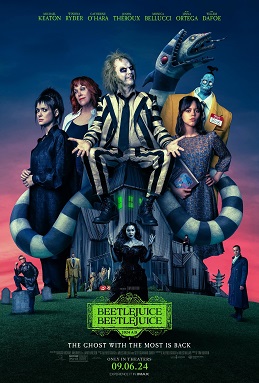The movie K-12 was cinematic but lacked smooth plot flow
September 14, 2019
After four years of what felt like an eternity of radio silence, Melanie Martinez made her long awaited comeback with the release of her second studio album and her first movie, K-12.
The movie follows the main character from Martinez’s first studio album, Crybaby, and her gang of friends that she acquires throughout the duration of the movie. Martinez’s acting in the role of Crybaby was not bad considering this was her first experience with a full length movie, but in some places felt a little stale due to the overall abstract nature of the film.
The main antagonist appeared to be the Principal, but his early downfall made it very clear that Martinez wasn’t going to follow the usual cookie cutter format of storytelling. Through Crybaby’s interactions with other students at the boarding school where the film takes place, it is revealed the antagonist of could come from anywhere, be it tradition, a son out for vengeance, the popular girl trying to keep what power she thinks she has or conformity.
The way K-12 presented controversial topics was only blatantly obvious when necessary. The concept of racial inequality in America and transgender rights were adressed within the first 15 minutes. I wish there had been more time to flush out these scenes, but the overall plot of Crybaby and her friends taking down the figurative patriarchy was the main plot, and therefore needed the attention.
Other topics such as eating disorders, gender stereotypes, society oppression the marginalized and the concept of adults abusing their power over children are shown with a mixture of intriguing gorey imagery, the haunting dance numbers, and each individual character’s personalities.
Despite this, I felt that by using the music videos to push the plot forward, it felt like portions of the movie stayed in one spot for too long, leaving less time to flush out character interactions and the importance of certain characters that just seem to pop up. The flow of the movie left me feeling like there were parts missing that would have been crucial for a major film. However, I felt that the way the movie presented the story behind the songs, the most crucial pieces to the film, didn’t take attention away from the importance of the music and the themes they were conveying.
K-12, like Martinez’s prior album, tackles mature subjects through its visuals, song lyrics and movie dialogue. The whimsically eerie tones that Martinez established with her first studio album back in 2015 are the most effective storytelling devices the artist used when writing the film, and have contributed greatly to her unconventional storytelling abilities. Seeing the students be affected rather than adults, really put into perspective how anyone could face these challenges, and being able to talk about them is the next step towards freedom.
I won’t lie, seeing some of these topics not only mentioned but shown in original and disturbing ways hit me hard to a point where I had to pause the movie three quarters of the way through. The use of body horror and dark imagery was, in an odd way, both intriguing and effective in getting Martinez’s message across without graphically depicting the real life situations. Taking the term “teacher’s pet” literally and using the metaphor of orange juice for eating disorders, were some of the more effective and controversial methods Martinez used in order to portray these sensitive topics.
K-12 was not the perfect movie, nor did it set out to be. It was originally intended to get people talking, discussing these issues that people, especially children, have the misfortune of experiencing every day. People often have to grow up and mature too fast due to events that most of society deems taboo to speak of. Martinez’s work is full of this message in all its forms.











































